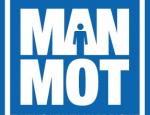My role
- About Us
How gender sensitive is health and safety in your workplace?
With perfect timing for this year's Men's Health Week on men and work, the TUC has issued the following guidance to all health and safety reps. We reproduce it here as something men's health campaigners will want to push in all workplaces, unionised or not - their own included.
The TUC's Gender and Occupational Safety and Health (G&OSH) Working Party have produced this checklist to help safety reps and others check whether their workplace health and safety policies and practices are gender sensitive.
Everyone has an equal right to protection from harm at work but that doesn't mean treating everyone as if they were all the same!
Recent research has shown that both sex (biological differences between women and men) and gender (socially determined differences) affect workers' health and safety in many ways. These differences are too often ignored or misunderstood, leading to failures in prevention.
Gender stereotyping (eg. 'women's work is light work' or 'stress is for wimps' ) or stereotyping in relation to different categories or work (eg. manual and white-collar jobs) can also lead to false assumptions about who is or is not at risk in the workplace. Important opportunities for prevention can be missed as a result.
The TUC recommends a gender-sensitive approach to health and safety as a way of improving prevention for both women and men and making sure that everyone is equally protected. You can use this checklist to help you:
- Identify gaps in workplace agreements, policies and procedures
- Highlight ways to improve investigation, risk assessment and training
- Improve the information gathered about men's and women's experiences of work and any ill effects
- Review and improve health and safety monitoring and data collection / information gathering
- Improve recognition and understanding of the issues and risks facing women and men in your workplace
- Address neglected issues (e.g. women's health at work, men's and women's reproductive health)
- Involve more women in health and safety consultation and decisions
- Ensure that all health and safety agreements policies and practices are gender sensitive.
- Make work fit for all workers.
Once you have worked through the checklist and you have a clearer picture of any issues/problem areas to be addressed, discuss these with your members and agree what you want to tackle first.
You may need to consult your members to find out more about their own experiences and any problems they have encountered. You may also want to involve your equality rep or shop steward in discussions too.
Once you have agreed your priorities, you will need to decide how you are going to raise these matters with your employer. The TUC publication Hazards at Work provides useful general guidance and Chapter 42 - 'Women Workers' provides advice on making risk assessment more gender-sensitive . If your employer doesn't see the importance of this, try a reminder about it being in everyone's interest to make sure that all workers are 'happy, healthy and here'!"
- See the www.tuc.org.uk tuc-14179-f0.cfm?>checklist in more detail here.
- Or www.tuc.org.uk tuc-14179-f0.pdf?>download a pdf copy here.
- You can find more resources on the www.tuc.org.uk http:>TUC Health and Safety website.
In This Section
Haringey health humour
I'd rather admit I love John Ryan!


 Donate to the MHF
Donate to the MHF
 Man MOT
Man MOT